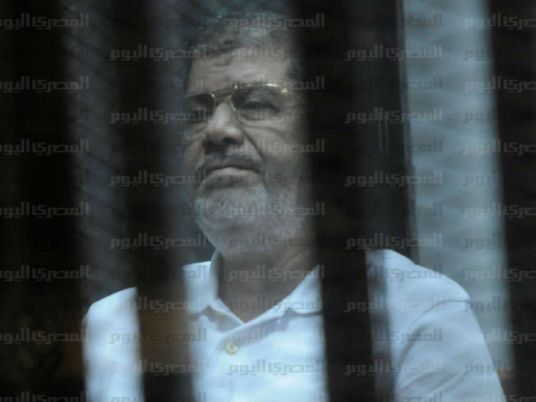As Egypt was marking the first anniversary of the killing of the revolutionaries at the hands of army forces on Mohamed Mahmoud Street, the freshly politicized as well as the non-politicized masses have managed to reinstate popular pressure as a third actor on the political scene.
Since then, this third actor has been exerting unexpectedly strong and continuous pressure on the political authority, its Islamist patron and the political opposition, along with its liberal, national leftist and feloul wings.
The pressure of the masses represents an unprecedented success, as it adds fresh momentum to the idea of change from below and its ability to confront authoritarianism. It also illustrates the lack of capacity of any political or social faction to monopolize power or determine the future of Egypt.
Is this a victory for the street or a more complex phenomenon? A closer look at the scene suggests the need for many nuances to the narrative circulating among pundits and mainstream media that the current conflict reflects a growing crisis between political Islam and democratic powers.
Indeed, democratic demands are increasing, particularly among young and loosely politicized actors. Nevertheless, it is difficult to put the opposing democratic and Islamist forces into two clearly identifiable camps.
President Mohamed Morsy’s constitutional declaration and proposed referendum on the new constitution have shown Egypt to have three isolated silos: the so-called Islamist camp; the liberal and leftist established opposition supported by some feloul (supporters of the old regime); and the street crowds including the urban youth.
All these various actors were unable to articulate their visions, hold a dialogue or even propose realistic solutions to the alarming clashes between Islamic demonstrators, the newly established national front and the spontaneous street protesters who joined to condemn the Muslim Brotherhood’s policies, power hegemony and desire to impose a new fait accompli.
As a result, over the last two weeks, Egypt witnessed three levels of conflict, in which the actors have still been unable to articulate revolutionary momentum, democratic claims or the political redistribution of tasks and roles.
The first level involves the presidency and its allies (the Brotherhood and the state control apparatus, including the Interior Ministry and, to a lesser extent, the Armed Forces) on one side, and what came to be termed the putschist wing inside state institutions (the judiciary and several high-ranking officials in the bureaucracy who reject the Brotherhood) on the other.
The second level concerns the ruling elite as a political current that unites behind its several Islamist powers in an emerging alliance, aimed at endorsing a new constitution for the country that reflects their “religious” visions against the different political powers, organized in parties that insist on both the civil nature of the state and the need for consensus in the constitution-writing process.
In fact, the different parties assembled under the umbrella of the National Salvation Front have attempted to feature their struggle as the main conflict on the revolutionary scene, yet they have not succeeded, since all talk about the phrasing of the constitution and its content is a largely elitist concern that fails to evoke the interest of more than 20 percent of the electorate.
The third level of conflict puts the informally organized groups and individuals of the increasingly repressive practices of the state’s security institutions against protesters — particularly the poorer ones on the outskirts of the capital, the strikers and sit-in demonstrators who have mobilized against the state’s maneuvers regarding the achievement of an acceptable minimum of the revolution’s goals. These include retribution for the killing of protesters; compensation of the martyrs’ families; the restructuring of security, the judiciary and the media sectors; the implementation of judicial rulings regarding the minimum wage and the removal of restrictions to the right to form new independent syndicates and trade unions.
The parties to this level of conflict, state institutions at some points and trained Brotherhood bases at others, have had to face crowds of protesters, activists and recently politicized groups. Contrary to the other levels of conflict, this level has been confrontational, even armed, since a premature date was set for the referendum. This was seen as a sign of the return of the repressive and authoritarian policies of the former regime.
The deconstruction of the current situation into a multi-layered ongoing conflict allows us to see that portraying the crisis as a standoff between political Islam and civil forces is purely reductionist.
Furthermore, it is neither a confrontation between revolutionary and counter-revolutionary powers, nor a conflict between democratic and authoritarian measures — it is rather a confused mix of both. The parties to each level of conflict are trying hard to mobilize supporters at the other levels to bestow legitimacy on their own struggle and aspirations.
Despite the remobilization of all forces, the continuation of these parallel conflicts won’t necessarily protect the revolution or keep it alive. Most probably, it will exhaust all players, pushing them to take extreme action and dispersing them further over the coming weeks and months.
With the worrying economic downturn and the alarming state of social polarization, the current crisis could eventually cause a legitimacy crisis — one that could take us back to square one regarding Egypt’s democratic transition.
Dina el-Khawaga is a professor in Cairo University’s faculty of economics and political science, and programs director at the Arab Reform Initiative in Paris.
This piece was originally published in Egypt Independent's weekly print edition.

